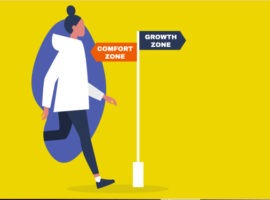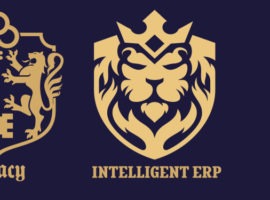Modern ERP: Companies that are thriving vs those that didn’t survive
 Modern ERP solutions provide companies with the flexibility and agility needed to adapt quickly to whatever happens next.
Modern ERP solutions provide companies with the flexibility and agility needed to adapt quickly to whatever happens next.
Many businesses have embarked on process transformation initiatives with the goals of running faster, becoming more agile, and operating more efficiently. But in talking to business leaders, I hear a lot about how their prior process transformation experiences fell short.
They share how in the past, they had deployed a promising new technology, but then not much changed. Not much value was realized. They don’t understand what went wrong or what they can do differently.
When we dig a little deeper, it’s often the same root cause: they used a new technology to automate old ways of working.
What they don’t realize is that automating inefficiency doesn’t result in true transformation.
 Modern ERP solutions provide companies with the flexibility and agility needed to adapt quickly to whatever happens next.
Modern ERP solutions provide companies with the flexibility and agility needed to adapt quickly to whatever happens next.
To illustrate, consider a customer we worked with some time ago. Their mobile development team had uncovered a new opportunity to leverage a mobile application in the manufacturing plant, where massive boilers had to be cleaned and inspected on a regular basis. For the maintenance teams doing this work, the most frustrating part of the process was completing pages of paper forms.
The mobile team’s approach was to lead with technology first: “Let’s create a mobile app so they can complete these forms on their mobile phones and just hit submit. Wouldn’t that be better?”
And indeed, doing away with paper and capturing data digitally is a big step forward. But it’s not a meaningful transformation – the kind that frees up a lot of time for higher-value work, cuts the time and effort in half or more, and translates into happier, more productive employees.
 For successful business transformation, leaders must take a people-first approach. Learn the benefits of putting people first in transformation projects, including a better bottom line.
For successful business transformation, leaders must take a people-first approach. Learn the benefits of putting people first in transformation projects, including a better bottom line.
At SAP AppHaus, we took a different approach, which starts by empathizing with the end user to discover their true needs. As we design and iterate, we combine this approach, which we call Design Thinking, with Architecture Thinking to create a solution that’s both technologically feasible and financially viable.
This approach allows you to hit the sweet spot between great user experience and business value.
In this case, we went on site and talked with the maintenance crews to learn about their work. We watched them put on bright yellow uniforms and gloves, enter the boilers, and come out covered in black crud, head to toe. We realized this was a dirty job – not a place for a mobile device, let alone paper – and getting out of the boilers faster was a priority for these workers.
Then we asked about the forms:
And low and behold, we learned that about 90% of the information they entered was just master data that they looked up in the company’s systems. These workers were spending most of their time typing in preexisting master data every time they cleaned and inspected the boilers!
 HR leaders are shifting from incremental training to a sustained culture of learning that brings people ahead, together.
HR leaders are shifting from incremental training to a sustained culture of learning that brings people ahead, together.
Leading with these human-centered insights, we collaborated with them to transform this task to eliminate paper and repetitive data reentry. Maintenance crews had direct input into the shaping of this process, and how the use of digital technology would work best in the real world.
Together, we streamlined the “paperwork” so that the mobile form involved just a few online fields that could be completed on an industrial handheld device. Data entry was reduced from five pages to five fields, and a lot of time was saved for data processing and corrections, which everyone was happy about.
This is the power of human-centered business process transformation that connects user journeys (in this case, the job of cleaning and inspecting boilers) to back-end systems and technologies (like mobile tech) that support processes and data to deliver the desired outcome.
It’s also an illustration of why every business needs to foster a culture of innovation that aligns people, processes, and technology to help grow and improve the business. The benefits are invaluable:
 With an intelligent ERP, a company can embark on a digital transformation strategy to set them up for the future of business – in five steps.
With an intelligent ERP, a company can embark on a digital transformation strategy to set them up for the future of business – in five steps.
To this end, we’re seeing customers create their own “creative spaces” where interdisciplinary teams can collaborate on how to switch from complex business processes causing major slowdowns (for example, to modern business processes powered by smart automation, intelligence, and instant insight).
Anyone can suggest new use cases — in fact, the best ideas come from the bottom up, not the top down — and be a part of leading change.
This approach isn’t just a “nice to have.” Today, it’s vital to success because top-down initiatives tend to move slowly and struggle with adoption.
When empowered employees take the lead and are supported by leader-coaches and partners who can help teams quickly align user journeys to build solutions, successful transformation happens faster, scales easily, and can be updated and maintained over time.